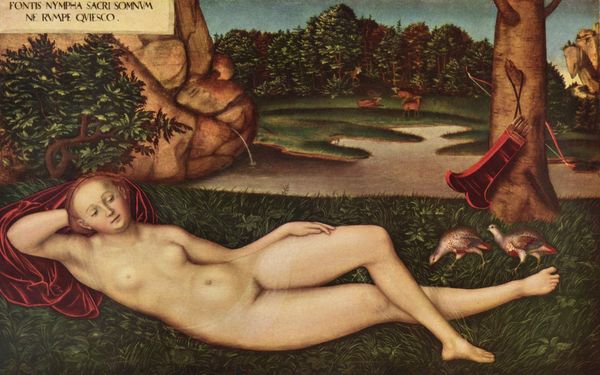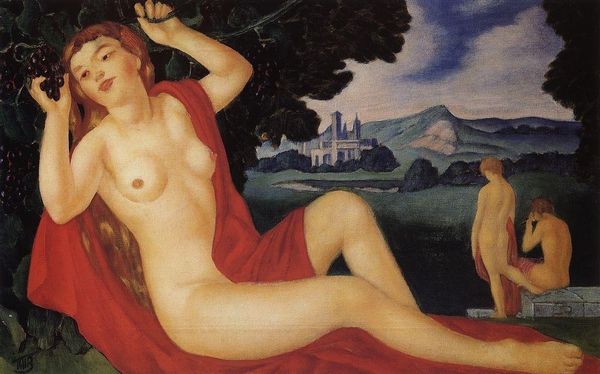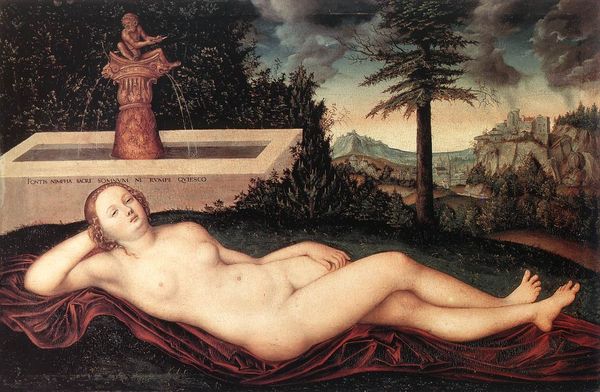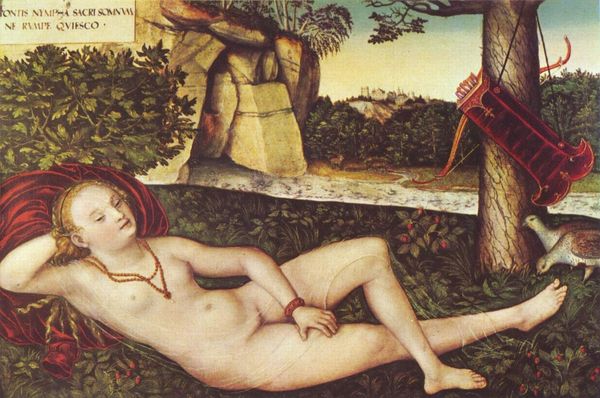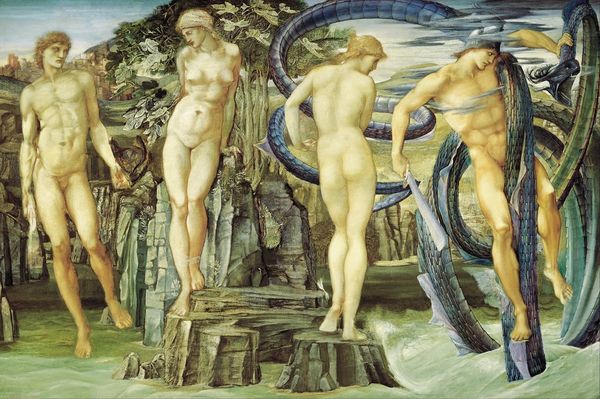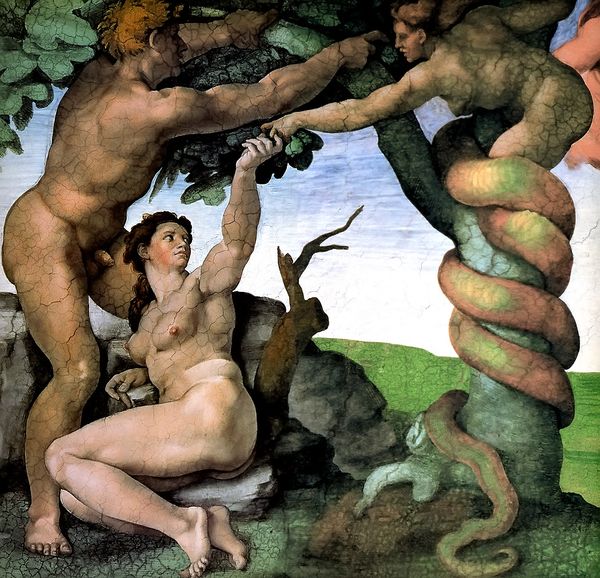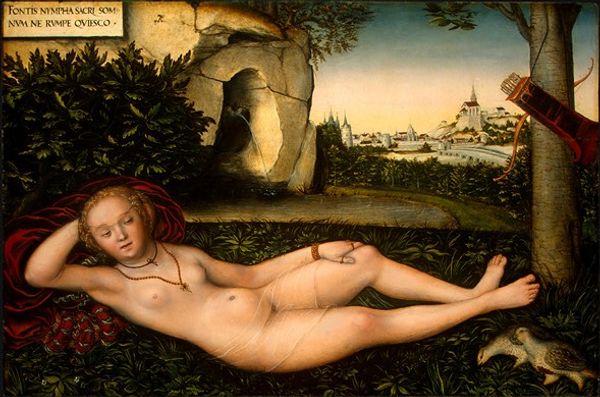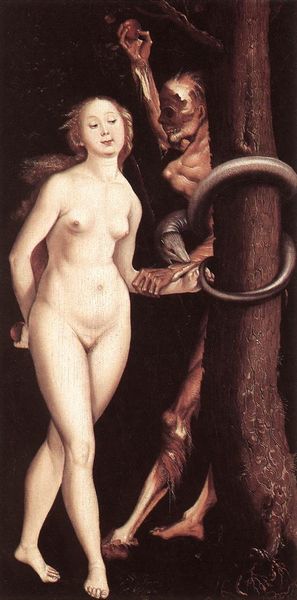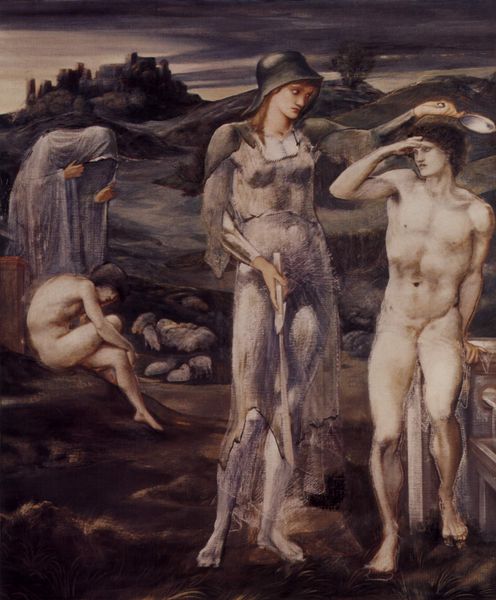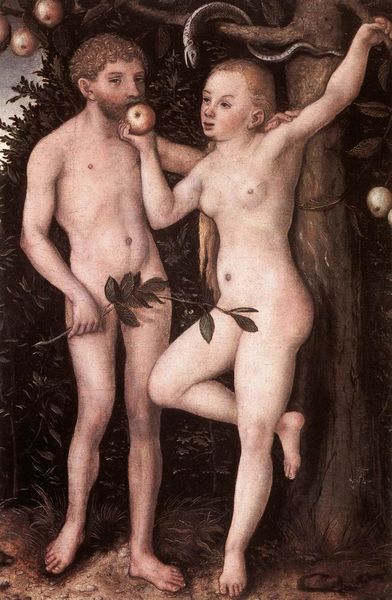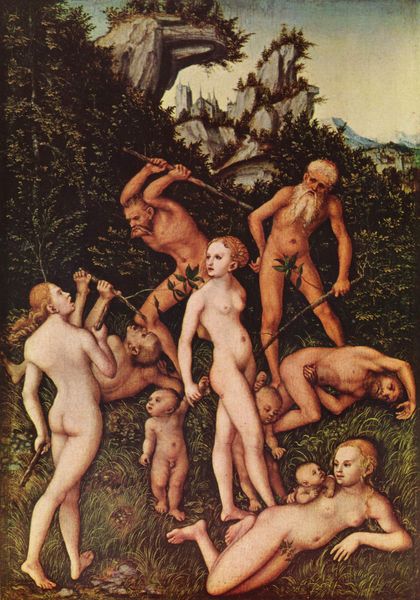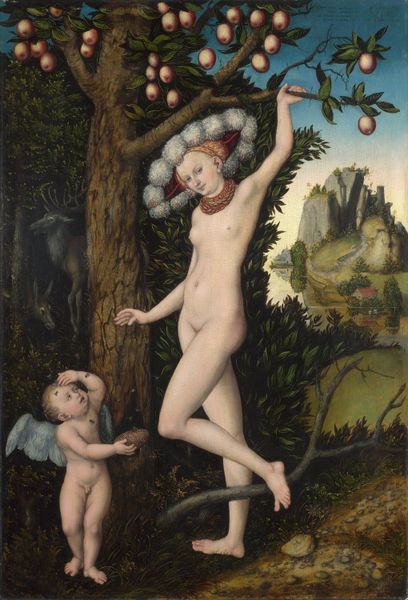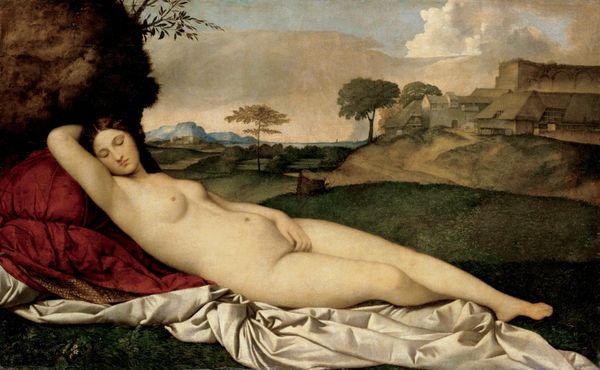
painting, oil-paint
#
allegory
#
fantasy art
#
painting
#
oil-paint
#
landscape
#
portrait reference
#
female-nude
#
mythology
#
northern-renaissance
#
surrealist
#
italian-renaissance
#
nude
#
portrait art
Copyright: Public domain
Curator: Let’s explore Lucas Cranach the Elder’s "The Nymph of the Fountain," a compelling oil painting completed in 1534, currently housed at the Walker Art Gallery. Editor: Ah, first impression: strangely serene. There’s something dreamlike, almost unsettling, about her languid pose contrasted with the formal, almost scientific detail of the landscape. It's as though a mythological creature is casually sunbathing. Curator: Absolutely. It’s a fascinating example of Northern Renaissance art blending classical mythology with a distinct Germanic sensibility. Nymphs in art often represent the life-giving force of nature, and Cranach's piece is rife with those themes but also with Renaissance concepts of beauty and idealization. Editor: And speaking of beauty, I notice that the birds nearby also capture this beauty from their detail and presence as an element of liveliness. Curator: They very well may do that, as many think it adds an allegorical twist to the image as some consider the birds to be symbols of love and lust. Moreover, look at how her reclining nude form invites the male gaze and then note the quiver filled with arrows, leaning on a nearby tree—symbols typically associated with Cupid—to create tensions of sexuality. This allows us to consider questions related to the male gaze in Renaissance artwork. Editor: Well, that makes me feel like maybe there is more going on in this seemingly relaxing scene than I thought! But still, the subdued palette, with its earthy tones and that dreamy blue in the distant landscape—it’s strangely captivating. It’s as if she’s whispering secrets that I can almost, but not quite, understand. The soft lighting and the hard shadows seem to add to that mystery. Curator: And there’s that inscription near the fountain: "Fons sum nympha sacri somnum ne rumpe quiesco," or, "I am the nymph of the sacred spring, do not interrupt my sleep." This is definitely a painting that speaks to the power dynamics inherent within the creation and consumption of art. It demands we acknowledge how representations of women, especially within a historical context, have served varied social and cultural purposes. Editor: You know, seeing it through that lens really makes me reconsider my initial response. It’s no longer just a pretty picture of a sleeping nude, but a loaded tableau. Maybe she is telling more than I thought. Curator: Exactly. And it reminds us to always question the layers beneath the surface when engaging with art of this era. Editor: Food for thought, indeed! Thanks for shining some new light onto "The Nymph of the Fountain." It’s been like a miniature journey.
Comments
No comments
Be the first to comment and join the conversation on the ultimate creative platform.
